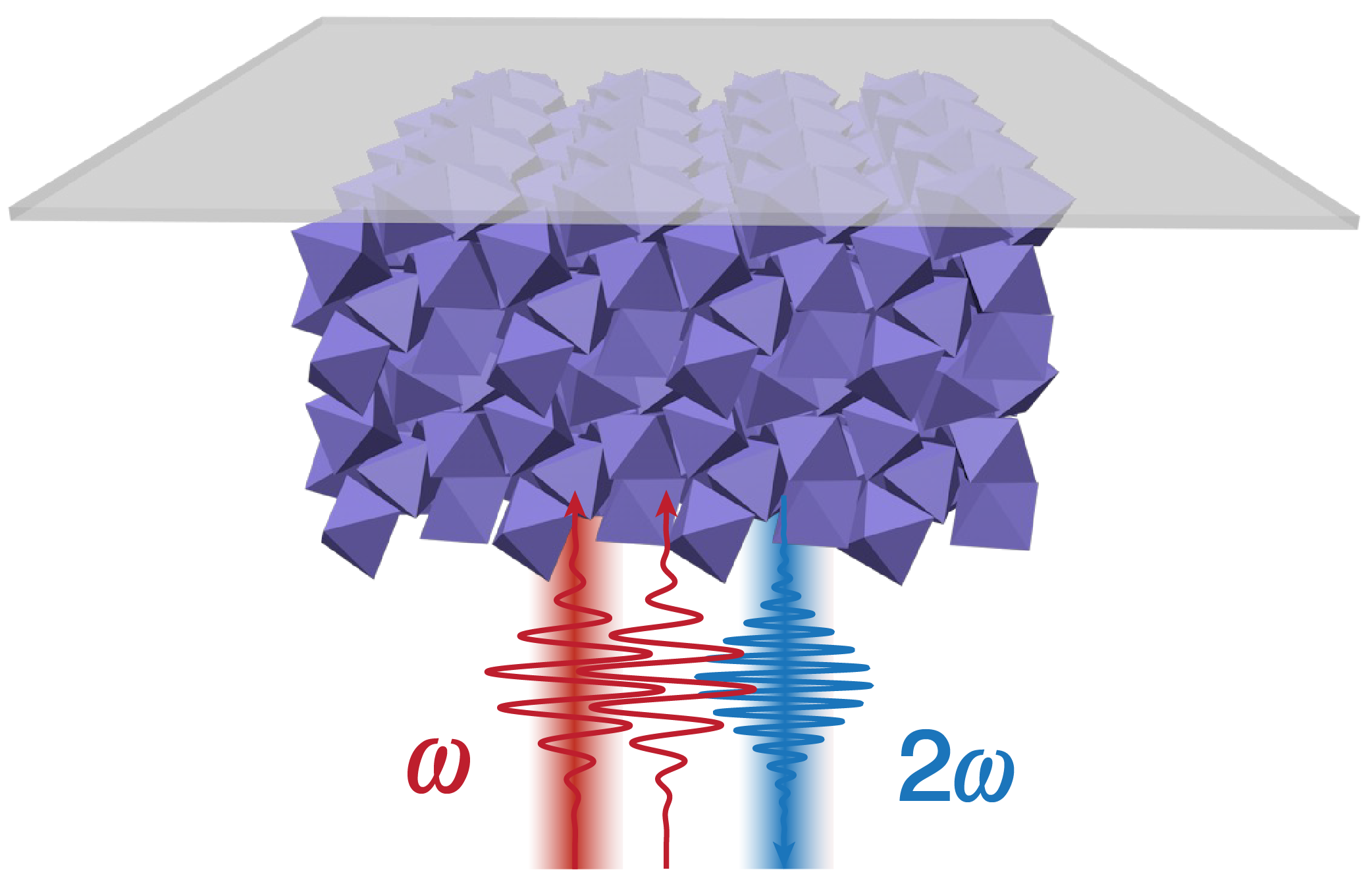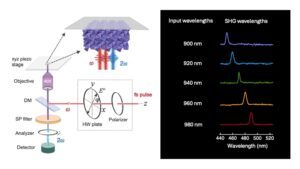Nanotechnology at Northwestern, News
Northwestern University Researchers Unveil Breakthrough in Nonlinear Optics through Colloidal Metacrystals
November 01, 2024

A paper titled “Nonlinear Optical Colloidal Metacrystals” was published today in Nature Photonics, led by Professors Chad Mirkin and Koray Aydin at Northwestern University. The research team presents a transformative advance in our ability to fabricate nonlinear optic and photonic devices through the bottom-up design of three-dimensional colloidal crystals engineered with DNA. This breakthrough has far-reaching implications for technologies that rely on quantum information processing, next-generation laser systems, ultrafast optical switches, compact frequency converters, and more.

Nonlinear Optics: A Primer
Nonlinear optical (NLO) effects have been observed in naturally occurring crystals, like those of glass or topaz, and engineered materials, where exposure to high-intensity light significantly alters how the electrons in the material move. NLO effects are fundamental to modern laser technologies, quantum information systems, and biomedical imaging.
One important type of NLO effect is called second-harmonic generation (SHG). In SHG, two photons combine to form a single photon with twice the energy, converting infrared light into visible light. Material asymmetry is crucial for generating NLO effects like SHG.
So-called non-centrosymmetric structures lack a center of symmetry, meaning the spatial arrangement of a material’s building blocks is not mirrored in all directions. These systems interact asymmetrically with light and can exhibit SHG. In contrast, centrosymmetric structures have a symmetrical arrangement, where every point in the structure has an equivalent opposite point, preventing the asymmetry needed for SHG to occur.
A Revolution in Nonlinear Optics
In their paper, the Northwestern researchers introduce a new type of material called NLO colloidal metacrystals. These metacrystals are made using colloidal crystal engineering with DNA, a process that relies on DNA’s rich chemistry to direct particle assembly at the nanoscale. Here, the metacrystals are comprised of octahedral-shaped gold nanocrystals functionalized with DNA such that they arrange into non-centrosymmetric or centrosymmetric structures at will.
Outperforming the Competition
The takeaway: the team found that the non-centrosymmetric colloidal metacrystals convert near-infrared light into visible light with a remarkable SHG conversion efficiency of 10^(-9), thus outperforming most two-dimensional plasmonic metasurfaces. “This discovery establishes a new milestone in the development of metamaterials based upon colloidal crystals – metamaterials are man-made with properties not found in nature,” said Mirkin. He and his team established the field of colloidal crystal engineering with DNA in 1996 when they showed that one could repurpose the blueprint of life, DNA, as both a bonding and structure-directing element in materials science.
A New Horizon for Optics and Photonics
The control afforded to researchers by colloidal crystal engineering with DNA surpasses that possible with most conventional routes to making NLO materials. By controlling DNA loading density on the nanoparticle building blocks, researchers either attain centrosymmetric or non-centrosymmetric phases. The shapes and compositions of nanoparticles, along with the lattice parameters of the meta crystals, play a crucial role in tuning SHG behaviors.
“By bringing together the fields of chemistry, materials science, and physics, we’ve created a remarkable new material—almost like something out of a science fiction novel—that can make the invisible, visible. Our metamaterial has the ability to take infrared light, which is invisible to the human eye, and transform it into visible light that we can see,” added Aydin. “Our colloidal nonlinear metamaterial could enable exciting applications, from improving medical imaging to enhancing communication technologies, by letting us access parts of the light spectrum that are usually hidden from view.“
Looking Forward
These important findings lay a foundation for the development of entire classes of advanced NLO metamaterials. Therefore, this research marks an exciting step toward faster, more efficient, and more powerful technologies in the quantum information processing, optical communications, semiconductor, and optoelectronics industries. The design rules established in this research can also be generalized to the development of related NLO nanomaterials, highlighting its wide scientific and technological impact.